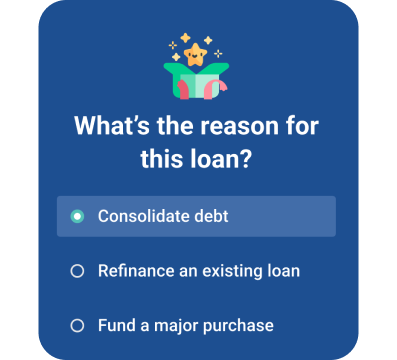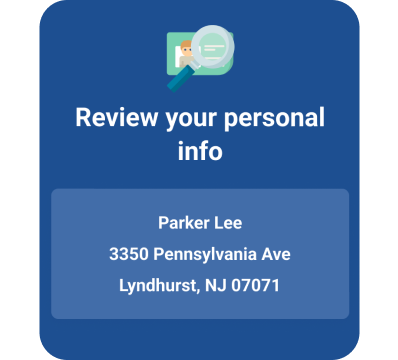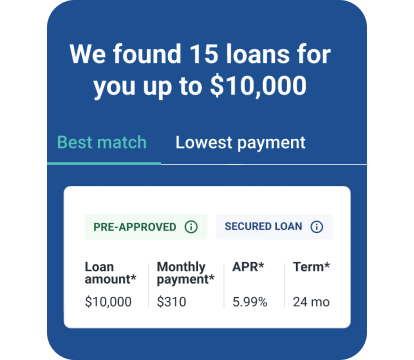In this article:
A good starting point in the personal loan approval process is getting prequalified. Prequalification lets lenders preview your eligibility for a loan, and gives you a chance to see how much you'll qualify for—without it affecting your credit. Gathering the relevant documents and getting prequalified could prevent delays and surprises later.
Getting a prequalification letter doesn't necessarily guarantee you'll qualify for a loan, however. You'll still need to submit a formal loan application. Read on to find out how to prequalify, why it's important and how your credit plays a role.
How to Prequalify for a Personal Loan
Prequalifying for a loan lets you compare multiple lenders and loan offers. You supply a lender with an outline of your financial picture, including your overall debt, assets and income. Your lender then reviews your information and gives you an estimate on how much you can expect to receive. Prequalification for a loan is typically quick and can be done over the phone, online or in person.
Find a Personal Loan Matched for You
You can also prequalify for personal loans with a tool like Experian CreditMatch™, which aggregates information from various lenders all in one place. This can make the prequalification process easier.
To use CreditMatch, you'll simply create an Experian account, fill in some basic personal information, submit a prequalification request and get matched with personal loan offers from multiple partners. If you previously placed a credit freeze on your credit report, you'll need to unfreeze it before requesting prequalification to allow lenders to check your credit.
How to use Experian CreditMatch:
- Navigate to Experian CreditMatch.
- Input your employment status, income and monthly house or rent payment.
- Confirm all of your personal information, such as your address, contact info and date of birth.
- Compare loan offers from Experian partners to find offers with the best rewards, rates and terms.
- Review the offer that best meets your personal and financial needs. You'll see how much you can save, how long it will take to get the savings, and links to specific offers and options.
The offers are good for up to 30 days, which gives you time to compare your estimated monthly payment amount, annual percentage rate (APR) and loan terms.
Prequalification vs. Preapproval
In addition to loan prequalification for a personal loan, lenders may also offer loan preapproval. Prequalification tends to be less comprehensive than preapproval, which can require you to share more detailed personal and financial information with a creditor.
A prequalification letter from your lender doesn't necessarily guarantee you'll qualify for a loan, whereas preapproval can be viewed as a stronger indication a lender will approve your loan application. Some lenders use the terms interchangeably, however, which can make deciding between preapproval and prequalification more confusing.
When being prequalified or preapproved, make sure you read the fine print to fully understand the process. If it is still unclear, consider reaching out to a lender's customer service line and asking questions.
How Prequalification Affects Your Credit
Prequalification will not typically affect your credit, but it can help you learn how much you can borrow. A lender will generally assess your credit using what's called a soft inquiry. Soft inquiries aren't associated with a formal application for credit and do not affect your credit scores.
It's also good to know that some lenders offer personal loans to borrowers with bad credit. If your credit needs work, you may not qualify for the best rates and terms on your loan. But taking the opportunity to improve your credit, shop around with multiple lenders and get prequalified will help you find the best loan to fit your specific needs.
Once you choose your best loan offer and apply for the loan, a lender will check your credit using what's called a hard inquiry, which may cause your credit score to temporarily drop a few points.
What to Do After a Loan Prequalification
Prequalification gives you the time to review your options and choose the best loan to meet your needs, ideally with the best rates and terms. But remember, prequalification doesn't necessarily mean you'll qualify for a loan. It is simply the first step in the process and is meant to give both you and your lender an idea of how much you can comfortably borrow.
Once you're prequalified (or preapproved), lenders can show you offers you may or may not choose to move forward with. If you accept an offer, you'll submit a formal loan application and verify your personal and financial information by providing documentation such as tax returns and pay stubs.
If the loan is approved, you'll receive the monthly payment amount and interest rate, and you may also be given the option to set up autopay or direct deposit. The timing can vary from one lender to the next, but the loan approval and funding process can take anywhere from one to six business days.
The Bottom Line
Getting prequalified for a loan can be encouraging—especially if you're thinking about applying for a personal loan and wondering if you'll be eligible. Checking your credit score before you apply can help you discover if you'll qualify for the most favorable rates and terms. It can also give you the chance to improve your score, and possibly save a fair amount of money in interest.




